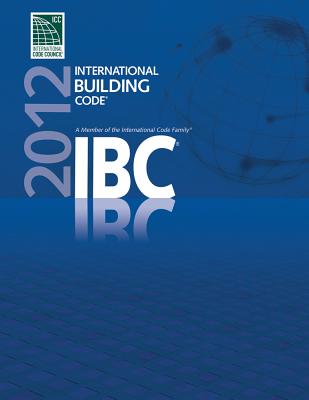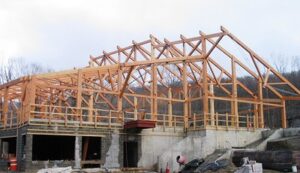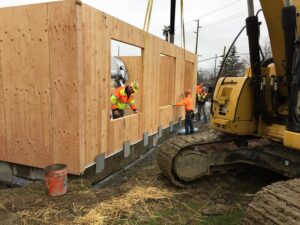 Architects and Contractors can spend a lot of time hunting for miscellaneous fire rated assemblies in wood construction. What you’ll eventually learn is that the easiest place to design your own 1-hour assembly is Section 721.6 of the International Building Code. The section details the procedures for calculating fire resistance of walls, floor/ceiling and roof/ceiling assemblies.
Architects and Contractors can spend a lot of time hunting for miscellaneous fire rated assemblies in wood construction. What you’ll eventually learn is that the easiest place to design your own 1-hour assembly is Section 721.6 of the International Building Code. The section details the procedures for calculating fire resistance of walls, floor/ceiling and roof/ceiling assemblies.
The total fire rating is determined by adding each component to reach a minimum total of 60 minutes. Fire protection rating is calculated from the flame side of the assembly and of course some assemblies have multiple flame sides.
Your wood framing members are required to be not more than 16″ on center. When they are you get 20 minutes in a wall and 10 minutes with floor and roof joists.
Wall Finishes and their ratings:
3/8″ wood structural panel with exterior glue – 5 minutes
15/32″ wood structural panel with exterior glue – 10 minutes
19/32″ wood structural panel with exterior glue – 15 minutes
3/8″ gypsum wallboard – 10 minutes
1/2″ gypsum wallboard – 15 minutes
5/8″ gypsum wallboard – 30 minutes
1/2″ Type X gypsum wallboard – 25 minutes
5/8″ Type X gypsum wallboard – 40 minutes
3/8″ + 3/8″ gypsum wallboard – 25 minutes
1/2″ + 3/8″ gypsum wallboard – 35 minutes
1/2″ + 1/2″ gypsum wallboard – 40 minutes
Where that isn’t quite enough in wall assemblies you can add insulation for another 15 minutes. The spaces between studs must be completely filled with glass fiber mineral batts a minimum of 2 lb/cf or rockwool or slag material batts a minimum of 3.3 lb/cf or cellulose a minimum of 2.6 lb/cf.
Floors must have a subfloor of at least 15/32″ wood structural panels or 11/16″ T&G. Roofs must have a deck of at least 15/32″ wood structural panels or 11/16″ T&G and finished roofing.
There are quite a few additional rules for fire resistance so please ask questions.










26 thoughts on “Calculating Fire Resistance Ratings of Wood Assemblies Using the IBC”
Hi,
I am a single business owner, architect, in Cleveland, Ohio. I have been to your website a few times and the blog listings I have read have been very helpful. Thanks so much.
Hey great post! I hope it’s alright that I shared this
on my Facebook, if not, no worries just tell
me and I’ll remove it. Either way keep up the great work.
Came across this discussion via Google, and you guys seem to know what you are talking about. My question is: Does installing a GWB ceiling on hat channels attached to the bottom of wood trusses increase or decrease the assembly’s fire rating (compared to no hat channels)? This is similar to UL HW-S-0089.
Joe,
Try using the prescriptive additive method in the IBC Ch. 7 for older assemblies.
Bill Foster
Director of Architecture
Trying to find the fire rating/UL assembly of a 3 1/2″ TnG roof decking that is on a 1950’s school. I keep strikuing out on the web and in the UL book any help would be appreciated.
Stephen, you might look at the Type IV construction requirements in the IBC, otherwise its a discussion with the building official. – Sean
HI, we are presently working on a 1885 firehouse to residential conversion. the existing main level garage area shall remain as a garage under with living area above on second level. The existing garage ceiling is pristine t&g southern yellow pine bead board with crown molding details and dental work, Any ideas how we can achieve the required 50 min resistance between spaces without removing the trim to install 5/8 type x . WE will be removing all sub floor from above to expose nom.. 2×12 floor joists 16″ oc..
I have been looking for a fire rating for the 7/8″ stucco + 2×4 studs @ 16″ o.c.+ 1/2″ gydbd. And for the 7/8″ stucco + 2×4 studs @ 16″ o.c.+ 5/8″ gydbd. Does anyone know where to find them? My e-mail: edlstruct@sbcglobal.net Thank you.
Hi Jeff, I know exactly the dilemma that you’re asking about. Certainly a big part of why so many rated stair enclosures are not wood. Personally I would tend to say that you use the spacer and have the structural engineer choose appropriate fasteners to support it.
Sean,
What are your thoughts regarding combustible wood trusses, or dimensional lumber framing perpendicular into a “fire barrier” wall , such as a stair enclosure? In the best case , I have wood trusses parallel to the long dimension of the stair, but would have to frame at least the stair landings through the gyp board shaft enclosure membrane to anchor them to the wall studs. Structural engineers do not want the drywall “spacer” between the ledger and the wall studs. Code officials do not want the gyp board membrane interupted without a penetration firestop detail.
I am sure there is a compliant method to construct a wood frame stair enclosure, but we are still fighting the details.
Josh, if the columns are big enough they can be Type IV, heavy timber.
Jay,
Any suggestions as to finding a rated assembly for wood columns in a type VA building. We are using PSL columns & beams and I am looking for a way to protect those with gyp.
Jay,
We are building a SIP house using OSB SIPs as the interior and exterior walls and and as ceiling and roof panels. We are using a cementious material on the interior and exterior walls, ceiling, and roof, so flame spread should not be an issue. However, we are looking at the thermal barrier issue regarding delaminating of the foam from OSB and/or an extreme heat transfer from fire causing structural issues. Do you have any suggestions on how we can achieve a thermal transfer rating of 15 minutes without using drywall. Without going into the many reasons, lets assume that there are strong reasons to avoid the use of drywall on this project.
Thank you.
Hi Jay, I would generally look to the manufacturer of a product like mag board to find out the ratings. The IBC doesn’t address that.
Trying to use Magnesium Oxide Board over OSB sheathed SIP to achieve one hour fire rating. How thick does the MGO board need to be?
Kyle, the answers are in the IBC, section 721.6 (2006 version).
You need at least 15 minutes of fire resistance from the top, which means a 5/8″ structural panel over the T&G. The 16″ O.C. framing will give you 10 minutes. That leaves you needing 35 minutes from the bottom, a layer of 5/8″ type X will give you 40 minutes. So, your suggested assembly would actually add up to 60 minutes, but you need the 5/8″ sheathing for the 15 minutes from the top.
I hope that helps.
Hi,
I need some help on a 1 hr fire rated floor system. this is a retrofit job, exisitng floor framing is 0.5″ T&G on top of 2×6 at 16″ oc( can’t find anything for the 2×6 everything said use 2×10), with the new retrofit, framing become double 2×6 at 16″oc. 5/8″ type x gym board attached below, exisitng T&G to remain and 0.5″ structural panel attached on top of the T&G, is this enough to make one hr fire rating?
thanks for your help
The code (IBC) will look for minimum 5/8″ gyp board to get 30 minutes. I would also say that on a 24″ spacing, you’ll want 5/8″ gyp on a ceiling. 1/2″ is really too thin for that span and will lead to a rippled appearance.
Hello,
I need help to determine the fire rating of a ceiling (unfinished attic space above) with 1/2″ Gyp Board with attached to wood trusses 24″ O.C. and 12″ of R-38 fiberglass batt insulation. By code I need a minimum 1/2 hour rating.
Thanks.
Read the 721.6.2.4 carefully and you should also be getting some fire protection from your subfloor. If the code official interprets it differently, then you’re looking at 2 layers of 1/2″ type X.
Trying to use section 721.6.1 of the IBC to acheive a 1 hour rating of existing floor assemblies in 20 buildings, by using only 1 layer of 5/8″ drywall. Floor joists vary in depth but maintain 16″ o/c or less.
Using 5/8″ type X = 40 minutes, + 16″ o/c spacing = 10 minutes, meet all other criteria for nominal thickness & sub/finish floor requirements but come up 10 minutes short.
Any other ideas: skim coat plaster any minutes, insulation in lfoor any minutes?
UL L501 covers me for 2 X10 but no other UL for less than a 2 X 10.
With the cypress are you looking for structural members or panels. The building codes don’t spend a lot of time on species except when it comes to strength.
Can you tell what the fire rating for row cypress wood is?
What is the fire rating of a 11/16 T&G subfloor with 1/4 layment floor with insulation on a 2×10 floor joist?
Kristin, I’m not positive about your question. Wood structural panels can have a rating and of course SIPs typically have a wood structure inside them. There are ways to rate SIPs.
You have a lot of options for walls that don’t use drywall, like concrete, block and brick. Plaster is still an option. I would not advise SIPs though without finish.
What’s the opposition to drywall and paint where necessary?
I am considering what other finishes could be used in place of drywall to achieve 15 minute fire rating (I would like to use SIPS walls–not great as a wall finish, but more importantly don’t believe they produce a properly rated wall on their own) that would be cost effective. I’m trying to figure out if I could build a house without drywall or paint.
Comments are closed.